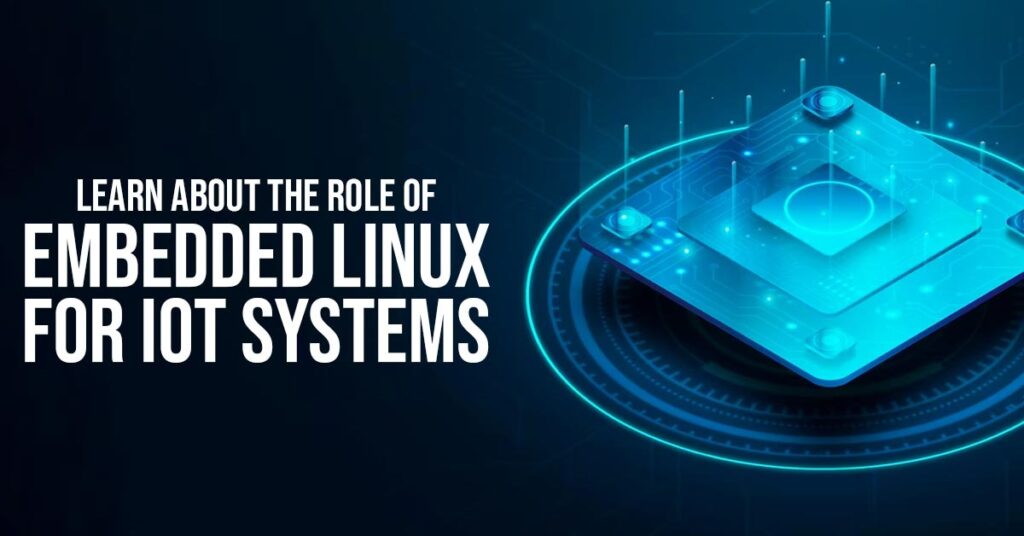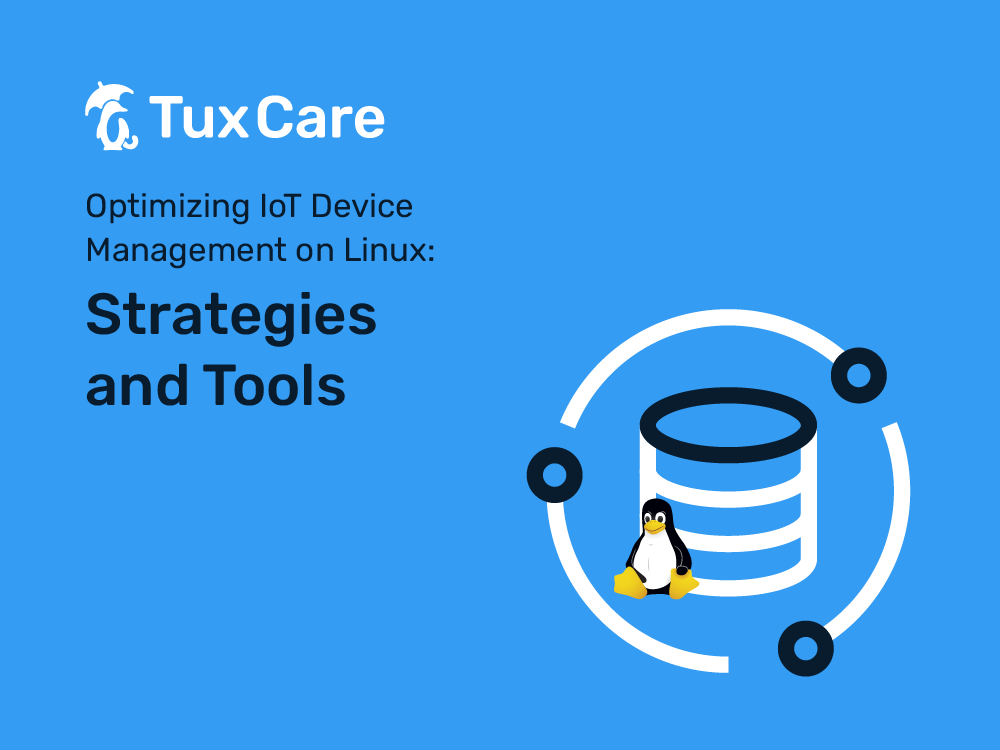Are you struggling to wrangle the ever-growing menagerie of IoT devices powered by embedded Linux? Then you're not alone, and the truth is, mastering the nuances of embedded Linux IoT device management is no longer optional; it's a critical imperative for any organization seeking to thrive in the connected world. From smart homes to sprawling industrial complexes, the Internet of Things (IoT) is rapidly reshaping our reality. At the heart of many of these connected devices lies embedded Linux, a versatile and powerful operating system. But with this power comes complexity. Effectively managing these devices, ensuring their security, and keeping them updated presents a unique set of challenges and opportunities.
The proliferation of embedded Linux in IoT is undeniable. It's the OS of choice for everything from smart thermostats and wearables to sophisticated industrial sensors and automotive systems. The appeal is clear: Linux offers a robust, customizable, and open-source foundation, enabling developers to tailor the operating system to the specific needs of their devices. However, this very flexibility can also be a double-edged sword. The sheer diversity of hardware platforms, software configurations, and network environments creates a fragmented landscape that demands a comprehensive and strategic approach to device management. The old days of manual configuration and ad-hoc updates are simply not scalable in today's dynamic IoT ecosystem.
| Category | Information |
|---|---|
| Definition | Embedded Linux is a specialized version of the Linux operating system designed for use in embedded systems, typically devices with limited resources and specific functions. |
| Key Characteristics |
|
| Common Use Cases in IoT |
|
| Advantages of Using Embedded Linux in IoT |
|
| Challenges in Managing Embedded Linux IoT Devices |
|
| Device Management Solutions |
|
| Security Best Practices |
|
| Update Strategies |
|
| Resource Monitoring Tools |
|
| Example Platforms |
|
| References |
|
One of the most significant hurdles is security. Embedded Linux devices, often deployed in remote or unattended locations, are prime targets for malicious actors. Without proper security measures, these devices can be compromised and used to launch attacks on other systems, steal sensitive data, or disrupt critical infrastructure. The challenge is compounded by the fact that many embedded Linux devices have limited processing power and memory, making it difficult to implement sophisticated security solutions. Regular security updates and patching are essential, but delivering these updates to a large fleet of geographically dispersed devices can be a logistical nightmare. It is very important to do diligent security from initial deployment to retirement, otherwise, sensitive corporate and customer data is at risk of being lost, stolen or compromised. The need for a robust and automated update mechanism is paramount.
- Mira Duterte Adoption The Truth Finally Revealed
- Find Your Celebrity Birthday Twin Discover Famous Birthdays
Beyond security, managing the sheer scale of IoT deployments presents another major challenge. As the number of connected devices continues to grow exponentially, organizations need tools and platforms that can automate device provisioning, configuration, and monitoring. Manually tracking and updating the inventory of thousands or even millions of devices is simply not feasible. IoT management platforms offer a centralized view of the entire device fleet, enabling administrators to remotely monitor device health, troubleshoot issues, and deploy software updates. Some linux distributions also have management tools, such as ubuntu core iot device. These platforms can automatically register devices, eliminating the need to manually track and update the inventory of your iot devices. This level of automation is critical for maintaining operational efficiency and ensuring that devices are always running the latest and most secure software versions.
Remote management of iot devices and gateways ensures secure and reliable operation; Furthermore, the diverse nature of IoT devices means that there is no one-size-fits-all solution for device management. Different devices may require different configurations, software versions, and security policies. Organizations need the ability to segment their device fleets into logical groups and apply customized management policies to each group. This level of granularity is essential for tailoring device management strategies to the specific needs of different applications and use cases. For example, a smart city deployment with thousands of sensors collecting environmental data will have different management requirements than a fleet of industrial robots performing precision manufacturing tasks.
Another critical aspect of embedded Linux IoT device management is the ability to remotely diagnose and troubleshoot issues. When a device malfunctions in the field, it's often impractical or impossible to physically access it for debugging. Remote diagnostics tools allow administrators to remotely access device logs, monitor system performance, and even remotely execute commands to diagnose and resolve problems. This capability can significantly reduce downtime and minimize the need for costly on-site visits. The mainflux iot platform deployed on an edge computing gateway integrates seamlessly with a centralized mainflux instance, creating a comprehensive, turnkey iot solution. Moreover, the open-source nature of Linux provides access to a vast ecosystem of debugging tools and resources, making it easier to diagnose and resolve even the most complex issues.
- Ullu Web Series Bollyflix Download Is It Safe Guide
- Fry99com Is It Safe What You Need To Know 2024 Update
The choice of Linux distribution can also have a significant impact on device management. Some distributions, such as Ubuntu Core, are specifically designed for embedded systems and offer features like over-the-air (OTA) updates, secure boot, and a minimal footprint. Ubuntu core uses the same kernel, libraries, and system software as classic ubuntu, resulting in a smooth transition to production, and includes ubuntu pro as the standard. Others, like Yocto Project, provide a highly customizable build environment that allows developers to create a custom Linux distribution tailored to the exact needs of their devices. Ultimately, the best choice of distribution depends on the specific requirements of the application, the hardware platform, and the organization's level of expertise.
The ability to securely update embedded Linux devices is paramount. Over-the-air (OTA) updates are the standard mechanism for delivering software updates to devices in the field. However, implementing a robust and reliable OTA update system can be challenging. The update process must be secure to prevent malicious actors from injecting compromised software into devices. It must also be resilient to network interruptions and power outages, ensuring that devices can recover from failed updates. Atomic updates, which replace the entire system image in a single transaction, are a popular approach for ensuring update reliability. These updates can be complex, and require deep understanding. Managing fleets of iot linux devices with balenas cloud platform, first 10 devices are free, develop, deploy, and scale your iot fleet with ease.
Containerization technologies like Docker are also playing an increasingly important role in embedded Linux IoT device management. Containers provide a lightweight and isolated environment for running applications, making it easier to deploy and manage software on a wide range of devices. Containers can also be used to isolate applications from the underlying operating system, improving security and reducing the risk of conflicts. The iot app store private app store for linux and iot; The enhanced version of the linux kernel and an embedded graphics stack are being used by the operating system, resulting in agility. Embedded linux is simple to configure and offers accessible programming interfaces. The containerized environments are agile.
Resource constraints are a constant consideration in embedded Linux development. Devices often have limited processing power, memory, and storage, which means that software must be carefully optimized for performance and efficiency. Monitoring resource usage is critical for identifying and resolving performance bottlenecks. Tools like `top`, `htop`, and `vmstat` can be used to monitor CPU usage, memory usage, and disk I/O. Optimizing code, reducing memory footprint, and minimizing disk writes can all help to improve the performance and longevity of embedded Linux devices.
As the IoT continues to evolve, so too will the challenges and opportunities of embedded Linux device management. New technologies like edge computing, artificial intelligence, and 5G are creating new possibilities for connected devices, but they also introduce new complexities. Edge computing, which involves processing data closer to the source, can reduce latency and improve performance, but it also requires more sophisticated device management capabilities. AI-powered devices can learn and adapt to their environment, but they also require more computational resources and more frequent software updates. 5G networks offer faster speeds and lower latency, but they also require new security measures to protect against cyber threats.
Looking ahead, the future of embedded Linux IoT device management will likely be shaped by several key trends. One is the increasing adoption of cloud-based device management platforms. Cloud platforms offer a centralized and scalable solution for managing large fleets of devices, providing features like remote monitoring, software updates, and security management. Another trend is the growing importance of security. As the number of connected devices continues to grow, so too will the risk of cyberattacks. Secure boot, encryption, and intrusion detection systems will become increasingly essential for protecting embedded Linux devices from malicious actors. Ros esm expanded security for robots, which is important for device management.
Automation will also play a crucial role in the future of embedded Linux IoT device management. As the number of connected devices continues to grow, it will become increasingly difficult to manage devices manually. Automated device provisioning, configuration, and monitoring will be essential for maintaining operational efficiency and ensuring that devices are always running the latest and most secure software versions. This process To guide you through this process and to make this simple here are some suggestions.
Finally, collaboration will be key to addressing the challenges of embedded Linux IoT device management. Device manufacturers, software developers, and security experts must work together to develop and deploy secure and reliable IoT solutions. Open-source communities, like the Linux Foundation, provide a valuable forum for collaboration and knowledge sharing. By working together, we can create a more secure and resilient IoT ecosystem that benefits everyone.
Linux and iot device management made easy. Its purpose is to be an enhanced and expanded reiser4 linux distribution for iot devices. Iot professional services bring iot devices to market; Youre looking for a way to build functionality to control, update, monitor, or secure your iot devices. Maybe you just built an iot business application, and want to deploy it to your fleet.
The internet of things (iot) has transformed the way we interact with the world, connecting a myriad of devices to the internet, from smart thermostats in our homes to industrial sensors in manufacturing plants. It is designed to run on embedded systems such as smartphones, sensors, and other iot devices. It is a standard version of linux that has been developed to meet the needs of current technology with its efficient memory management and can fit in small hardware devices like mobile phones, and smart wearable devices. In simple terms, it can be Ubuntu frame embedded graphical displays; Iot management platforms can automatically register your devices, eliminating the need to manually track and update the inventory of your iot devices.
In conclusion, managing embedded Linux IoT devices is a complex but critical task. By understanding the challenges and opportunities, organizations can develop effective strategies for securing their devices, keeping them updated, and ensuring their reliable operation. With the right tools, technologies, and strategies, it is possible to harness the full potential of the IoT and create a more connected and intelligent world.


